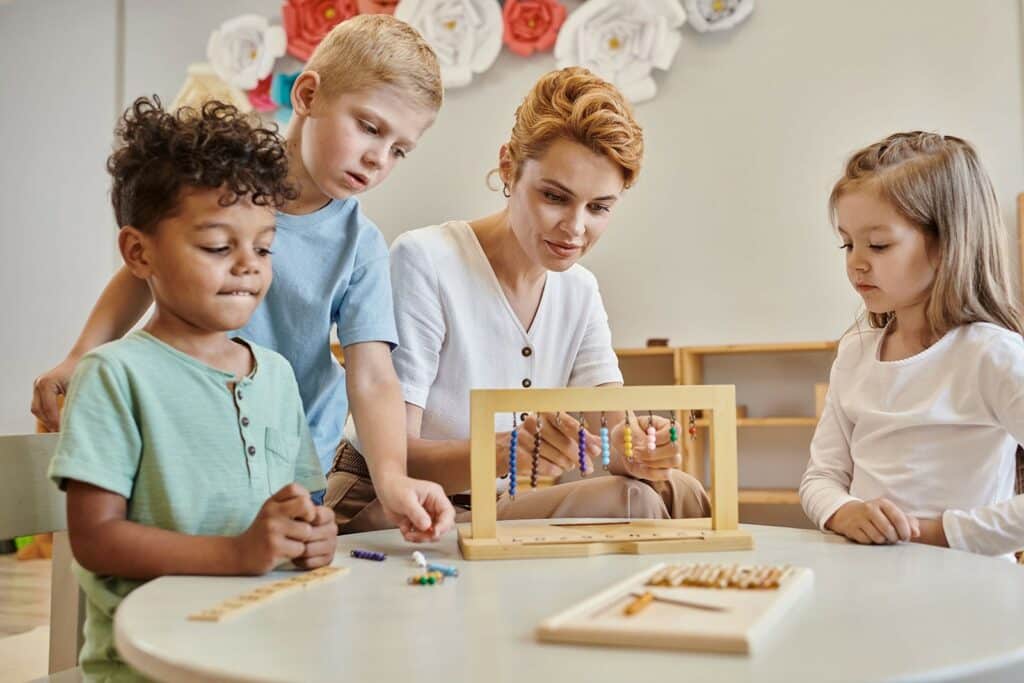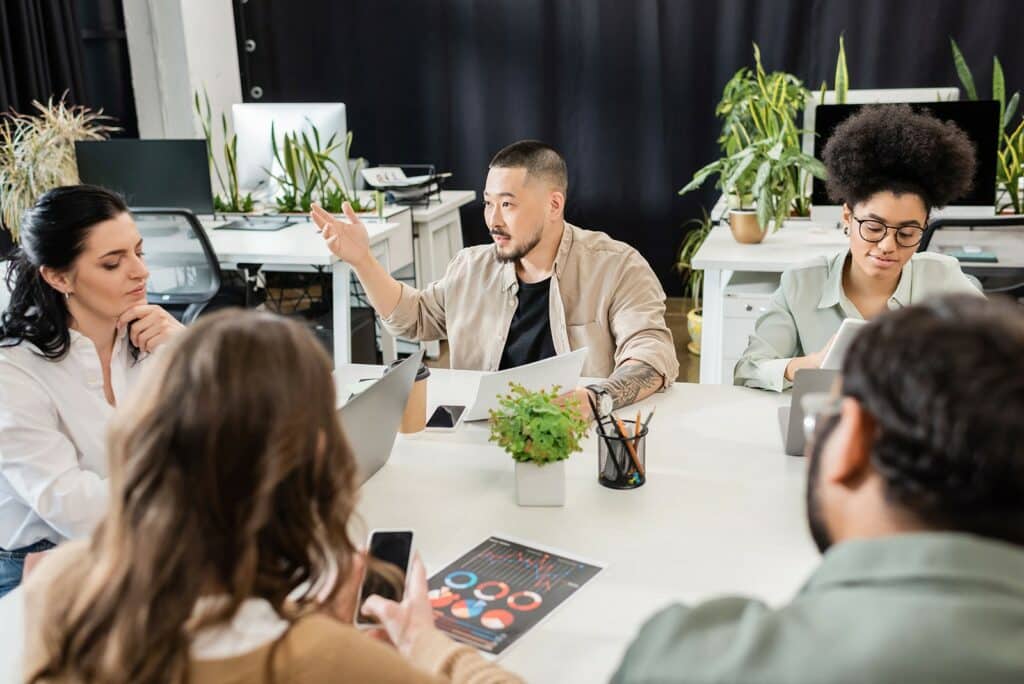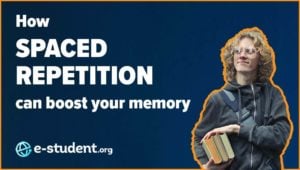- According to the Social Learning Theory, people acquire new knowledge and behavior through observation and modeling.
- Students are not limited to learning from the rewards and punishments they receive. They can also learn from observing the rewards and punishments that others receive.
- Social learning is an effective tool for understanding the attitudes and actions of students and reinforcing desirable behaviors.
We all learn by watching other people, especially in this digital age. We watch celebrities, influencers, athletes, and other skilled people online, observing them and mimicking their behavior. This type of behavior is known as observational learning, which is a central concept in the Social Learning Theory.
Our role as teachers is to guide students in becoming good learners and even better individuals. Educating students isn’t always just about teaching the lessons found in books. It’s also about developing them into contributing members of society. Applying Social Learning Theory in the classroom, whether it’s virtual or in-person, can help us guide the students to develop valuable life-long habits and skills as well as directly address negative behavior.
In this article, we’ll discuss the Social Learning Theory and its different stages, the benefits and drawbacks of the theory, and how it can be utilized in the virtual classroom.
Table of Contents
Social Learning Theory and observational learning
The Social Learning Theory was first introduced by Neil Miller and John Dollard in 1941. Other people also contributed to this theory in the following years. But the person who made the biggest contribution to this theory is Albert Bandura, a Canadian-American psychologist. In the 60s, he conducted an experiment that studied aggression. In the experiment, children observed adults who modeled positive or aggressive behavior towards an inflatable plastic toy resembling a clown called Bobo. The children also observed the adults displaying aggression being rewarded, punished, or receiving no consequences.
Those who observed passive, non-aggressive behavior tended to interact with Bobo more positively. Many of the preschool children who observed the negative behavior getting rewarded or not getting punished exhibited the same behavior. They were more likely to behave aggressively against the clown. Importantly, children were less likely to act aggressively against the clown when they had observed the aggressive adult being scolded.
A key takeaway from this is that children did not have to directly experience positive or negative consequences themselves – it can be enough to observe these happening to others.

Based on this and other experiments, Bandura concluded that people learn by observing and imitating the behavior of others. He also concluded that observational learning isn’t limited to seeing someone exhibit a behavior in front of you. We also learn from what we see on media, whether these are real or fictional people. For example, you’ve probably seen a child learning how to sing a nursery rhyme after watching Coco Melon or another show.
In addition, observational learning can also occur when we listen to verbal instructions, such as when someone describes or explains how to do something, like when listening to a podcast. Simply put, people can learn from watching, hearing, or reading.
Bandura’s theory states that learning is a cognitive-behavioral process. According to the Behavioral Learning Theory, learning is a result of direct experience and conditioning. Now, Bandura doesn’t discount that learning is a result of direct experience through reinforcement or motor reproduction. However, he believes that we can also learn from the experiences of others, and it is not necessary for us to imitate the behavior to learn it. The consequences of other people’s behaviors play an important role in whether we will imitate it or not.
What about the cognitive aspect? First, observational learning cannot occur if cognitive processes are not involved. This is because observation is a cognitive skill. In addition, while the Cognitive Learning Theory focuses on the internal processes in the brain that are responsible for learning, such as attention and memory, the Social Learning Theory connects these processes with behavior, as two of the stages of observational learning are attention and retention.
Examples of social learning
Here are a few examples of observational and social learning:
1. A preschooler follows the teacher’s instructions because he saw his classmate getting a sticker for doing the same action.
2. An employee arrives at work on time because he saw a colleague getting a deduction on his salary for being late.
4. A teenage girl learns how to do makeup by watching videos on YouTube.

Stages of social learning
According to Bandura, learning is not a passive process. We actively observe others and learn from others, but we do not do this all the time. It is only when we have concluded that we need to learn or change a particular behavior that we start observing. Bandura refers to this as the mediation process. This process has four stages:
Attention: Learning cannot happen if we do not pay attention. A behavior needs to grab our attention for us to even consider imitating it. In addition, we pay more attention to people we like – our parents, friends, celebrities, etc. The closer we pay attention, the more likely it is for us to retain the information we gather regarding this behavior.
Retention: An important part of the learning process is our ability to record information for later retrieval. We can only imitate behavior if we remember it well. We often do not reproduce a behavior after seeing it. Once observed, we encode the information into our brain and then refer to it as a guide when we want to imitate the behavior.
Motor reproduction: This is the stage where we perform the observed behavior. Practice (repetition) improves our ability to reproduce the behavior and can lead to skill advancement. Take note that our ability to perform the observed behavior will influence whether we imitate it or not – if it difficult for us to reproduce a behavior, we are less likely to imitate it.
Motivation: For observational learning to succeed, we must be motivated to perform the behavior that has been modeled. We’ve learned from behavioral theories that reward and punishment are effective motivators. But social learning also teaches us that these reinforcements do not have to be experienced directly. Simply witnessing the positive or negative outcome of someone else’s action can influence our decision on whether to imitate it or not.
Benefits of the Social Learning Theory
There are several advantages to the application of the Social Learning Theory in the classroom:
1. Observational learning is a natural process for all of us. We consciously and unconsciously observe the people around us. Teachers can use this natural social behavior to engage their students and help them connect with the lessons in class.
2. Social learning helps us understand how cognitive and environmental factors can influence learning and behavior. Teachers can use this understanding to create improved learning environments that promote learning and positive behavior.
3. This approach is easy to apply and flexible. It can be used in various learning environments. In addition, learning can happen in different ways, such as observation, imitation, and direct experience.

Applying the Social Learning Theory in the virtual classroom
Social Learning Theory can be incorporated into the real or virtual classroom in several ways:
Gamification and simulations
Gamifying the learning experience can often have a positive effect on learner engagement. In social learning, turning an activity into a game with rewards for achievements can increase student engagement and participation. In addition, it turns learning into a more interactive experience, providing students with opportunities to interact and learn from their peers. Seeing others take actions and get rewarded for these actions increases the likelihood for others to imitate the behavior.
Engaging in simulations can help students observe lessons in real life and see the consequences of their actions – and those of their peers. For example, to teach students good financial habits, you can let them practice budgeting based on an average salary and compare their budgets. Seeing how their financial choices can affect how much they’ll save can make the lesson more unforgettable.
Peer coaching
Students can be a positive influence on each other. Peer coaching involves partnering less skillful students with proficient ones to discuss a lesson or review answers on a test. This type of interaction is collaborative. The student who requires help can use this opportunity to observe the behavior of the proficient student. The latter can also benefit because this partnership reinforces his knowledge.
Pair and group work
Like peer coaching, creating pairs or groups within the classroom can provide students with opportunities to observe the different skills as well as positive traits and behaviors of their peers. For example, you can pair someone inquisitive with a student who lacks initiative. The former student may be able to positively influence the latter, becoming a model that he can imitate.
Flipped classroom model
The flipped classroom model involves putting the reins in the students’ hands. Unlike the traditional classroom where the teacher delivers a lecture, in a flipped classroom, the students are required to learn about the lesson prior to coming to class. Teachers can provide the materials using software like edpuzzle or allow students to use digital resources such as Ward’s Science or Coursera to prepare themselves before class.
When they’re in class, they need to apply what they learned through activities while the teacher serves as a coach or facilitator. In a flipped classroom, students are provided the opportunity to observe the behaviors of their fellow classmates. They see what actions are getting praised and corrected by the teacher. They can then apply these observations to themselves.
Conclusion
According to the Social Learning Theory, we are a product of our environment. Every experience we have, every person we meet, every book we read. Basically, anything we see and hear can influence us, shaping us into who we are today. As teachers, we can utilize this knowledge to gain a better understanding of why students behave the way they do. More importantly, we can utilize this knowledge to better serve as positive role models and help them develop skills and behaviors that will turn them into valuable members of society.



